[BioNEC-27] Vinther, M., Kjems, J. Interfacing DNA nanodevices with biology: Challenges, solutions and perspectives. New J. Phys. 2016, 18, 85005. [Abstract]
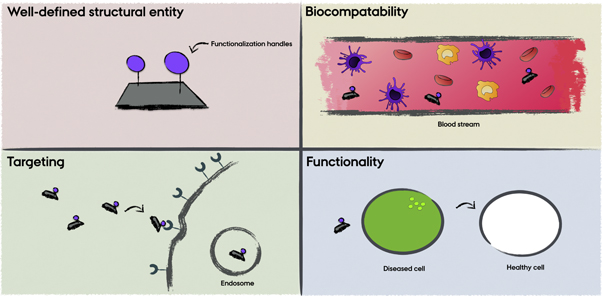
[BioNEC-26] Okholm, A. H.; Kjems J. DNA nanovehicles and the biological barriers. Adv. Drug Deliv. Rev. 2016, 106, 183-191. [Abstract]
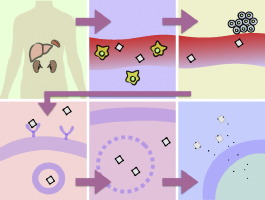
[BioNEC-25] Schaffert, D. A. H.; Okholm, A.; Sørensen, R. S.; Nielsen, J. S.; Tørring, T.; Rosen, C. B.; Kodal, A. L. B.; Gothelf, K. V.; Kjems, J. Intracellular delivery of a planar DNA origami structure by the transferrin-receptor internalization pathway. Small 2016, 12, 2634-2640. [Abstract]
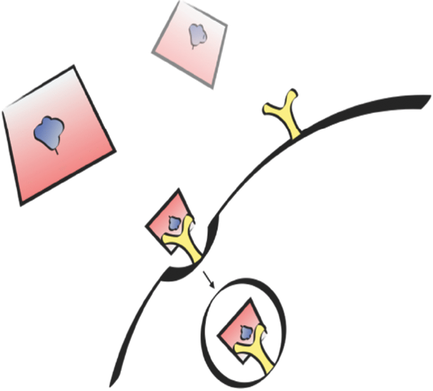
[BioNEC-24] Cogoi, S, Jakobsen, U, Pedersen, EB, Vogel, S & Xodo, LE. Lipid-modified G4-decoy oligonucleotide anchored to nanoparticles: delivery and bioactivity in pancreatic cancer cells. Scientific Reports, (2016), 6, 38468. [Open Access]
Abstract: KRAS is mutated in >90% of pancreatic ductal adenocarcinomas. As its inactivation leads to tumour regression, mutant KRAS is considered an attractive target for anticancer drugs. In this study we report a new delivery strategy for a G4-decoy oligonucleotide that sequesters MAZ, a transcription factor essential for KRAS transcription. It is based on the use of palmitoyl-oleyl-phosphatidylcholine (POPC) liposomes functionalized with lipid-modified G4-decoy oligonucleotides and a lipid-modified cell penetrating TAT peptide. The potency of the strategy in pancreatic cancer cells is demonstrated by cell cytometry, confocal microscopy, clonogenic and qRT-PCR assays.
[BioNEC-23] Ries, Annika; Kumar, Rajesh; Lou, Chenguang; Kosbar, Tamer; Vengut-Climent, Empar; Jørgensen, Per T.; Morales, Juan C.; Wengel, Jesper. Synthesis and biophysical investigations of oligonucleotides containing galactose-modified DNA, LNA, and 2'-amino-LNA monomers. Journal of Organic Chemistry (2016), 81(22), 10845-10856. [Abstract]
Abstract: Galactose-modified thymidine, LNA-T, and 2′-amino-LNA-T nucleosides were synthesized, converted into the corresponding phosphoramidite derivatives and introduced into short oligonucleotides. Compared to the unmodified control strands, the galactose-modified oligonucleotides in general, and the N2′-functionalized 2′-amino-LNA derivatives in particular, showed improved duplex thermal stability against DNA and RNA complements and increased ability to discriminate mismatches. In addition, the 2′-amino-LNA-T derivatives induced remarkable 3′-exonuclease resistance. These results were further investigated using molecular modeling studies.
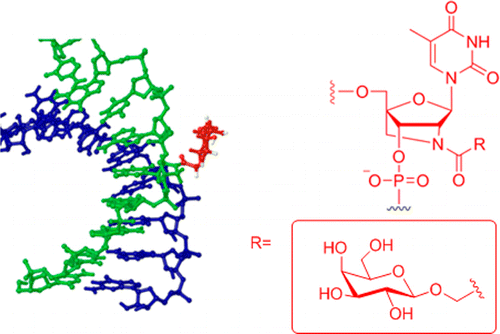
[BioNEC-22] Lou Chenguang; Martos-Maldonado Manuel C; Madsen Charlotte S; Thomsen Rasmus P; Midtgaard Søren Roi; Christensen Niels Johan; Kjems Jørgen; Thulstrup Peter W; Wengel Jesper; Jensen Knud J.: Peptide-oligonucleotide conjugates as nanoscale building blocks for assembly of an artificial three-helix protein mimic. Nature Communications (2016), 7, 12294. [Abstract]
Abstract: Peptide-based structures can be designed to yield artificial proteins with specific folding patterns and functions. Template-based assembly of peptide units is one design option, but the use of two orthogonal self-assembly principles, oligonucleotide triple helix and a coiled coil protein domain formation have never been realized for de novo protein design. Here, we show the applicability of peptide–oligonucleotide conjugates for self-assembly of higher-ordered protein-like structures. The resulting nano-assemblies were characterized by ultraviolet-melting, gel electrophoresis, circular dichroism (CD) spectroscopy, small-angle X-ray scattering and transmission electron microscopy. These studies revealed the formation of the desired triple helix and coiled coil domains at low concentrations, while a dimer of trimers was dominating at high concentration. CD spectroscopy showed an extraordinarily high degree of α-helicity for the peptide moieties in the assemblies. The results validate the use of orthogonal self-assembly principles as a paradigm for de novo protein design.
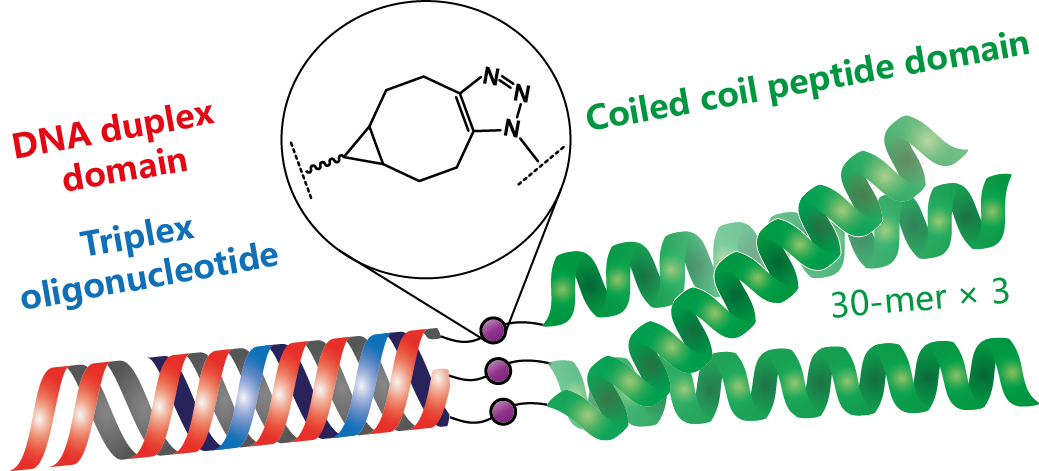
[BioNEC-21] Jakobsen, Ulla; Vogel, Stefan.: Mismatch discrimination of lipidated DNA and LNA-probes (LiNAs) in hybridization-controlled liposome assembly. Organic & Biomolecular Chemistry (2016), 14(29), 6985-6995. [Abstract]
Abstract: Assays for mismatch discrimination and detection of single nucleotide variations by hybridization-controlled assembly of liposomes, which do not require tedious surface chem., are versatile for both DNA and RNA targets. We report herein a comprehensive study on different DNA and LNA (locked nucleic acids) probe designs, including membrane-anchoring requirements, studies on different probes and target lengths (including overhangs), DNA and RNA targets (including sequences assocd. with pathogens) for lipidated nucleic acids (LiNAs). Advantages and limitations of the liposome assembly based assay in the context of mismatch discrimination and SNP detection are presented. The advantages of membrane-anchored LiNA-probes compared to chem. attached probes on solid nanoparticles (e.g. gold nanoparticles) are described. Key functionalities such as non-covalent attachment of LiNA probes without the need for long spacers and the inherent mobility of membrane-anchored probes in lipid-bilayer membranes will be described for several different probe designs.
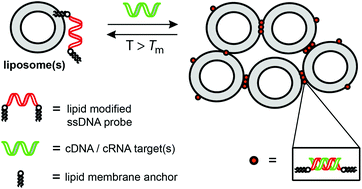
[BioNEC-20] Munch, Henrik Kofoed; Nygård, Jesper; Christensen, Niels Johan; Engelbrekt, Christian; Østergaard, Mads; Porsgaard, Trine; Hoeg-Jensen, Thomas; Zhang, Jingdong; Arleth, Lise; Thulstrup, Peter Waaben; Jensen, Knud Jørgen.: Construction of insulin 18-mer nanoassemblies driven by coordination to Iron(II) and Zinc(II) ions at distinct sites. Angewandte Chemie (International Edition) (2016) 55(7), 2378-2381. [Abstract]
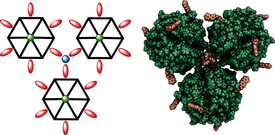
[BioNEC-19] Vogel, S. Ries, O.: Aptamer-liposome conjugates: Current art and furture prospects, in Aptamers: Tools for nanotherapy and molecular imaging, Ed. R. N. Veedu, CRC Press/Taylor & Francis Group: Boca Raton, FL, 223-251, (2016).